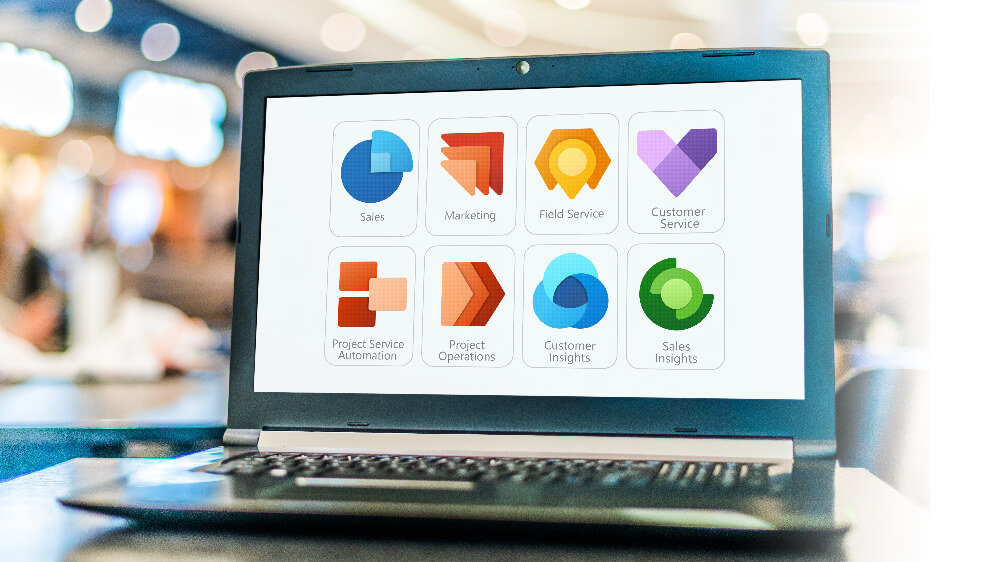This website uses cookies. By continuing to browse the site, you are agreeing to our use of cookies
Digital Experience Platforms (DXPs), the Horsepower for Businesses to Thrive
Customer Experience
November 28, 2022
The Beginning.
The internet and the world wide web enabled unparalleled outreach bringing people closer than ever before. Early Digital Business Transformations (DBTs) focused on software attuned to internal and external audiences. They were further subdivided by product and business functions reflective of prevalent business operating models.
Organizations onboarded software products for internal business functions, including HRMS, Employee Portals, Finance, Budgeting, Forecasting, Payroll, CRM, ERP, and others. These early systems operated in siloes.
For the external world, as a starting point in this rapidly evolving digital realm, organizations onboarded and enabled CMSs (Content Management Systems (s)) as the core for digital brand identity, strategy, and engagement. These CMSs powered new content, content refreshes, and content lifecycle management equipped with administration, security, governance, regulatory, and compliance statutes. CMSs further evolved to form the backbone for marketing content across web and mobile devices.
As the social web expanded with user-generated content, the need for more personalized engagement and deeper business story unification resulted in Web Experience Management (WEM). With WEM, organizations gathered engagement data, built out personas, and used both to serve more personalized content to their customers.
While CMS and WEM products achieved what they set out to do, being predominantly marketing-focused, they worked in isolation from the broader enterprise software ecosystem. Consequently, unable to deliver a 360-degree view of the business, and its customers.
Also, the internal, external, and business function segregation across people, products, and systems was doomed with information siloes. This needed to be eliminated, more importantly, further reimagined to deliver delightful customer experience journeys across the customer’s lifetime.
Rising Customer Expectations – Birth of Digital Experience Platforms (DXPs).
Rising customer expectations resulted in new-age tech, skills, and software products that enabled businesses rapidly create meaningful, contextual, and personalized digital footprints to address this new demand for customer centricity. This forced a paradigm shift from siloed internal applications, CMSs, WEM, and e-commerce to the philosophy of customer journeys, which, when unified, delivered value across the complete customer lifetime journey.
Progressive businesses strategized, crafted, and prioritized roadmaps for Consumer Grade Experiences to enrich touchpoints, eliminate friction, nurture and grow outreach, personalize and contextualize engagement to deliver value throughout the customer’s lifetime journey.
Outreach, engagement, and productivity now needed to holistically encapsulate creators and consumers (together referred to as customers), viz. employees, prospects, customers, partners, consultants, contractors, and vendors. Rising expectations made Consumer Grade Experiences table stakes, creating a new normal.
This resulted in the birth and rampant adoption of Digital Experience Platforms (DXPs) that today power customer lifetime journeys, capturing and acting on every customer moment across touchpoints with value, meaning and purpose.
What are Digital Experience Platforms (DXPs)?
Digital Experience Platforms (DXPs) are integrated cohesive products and technologies that enable composition, management, delivery, and optimization of contextual and personal experiences across customer lifetime journeys. DXPs enable optimal experiences to constituent personas and ensure frictionless continuity across the customer’s lifetime. They provide presentation and orchestration that bind together capabilities from multiple applications to enable seamlessly delightful consumer experiences.
Today, DXPs are an integral part of every organization’s digital business ecosystem enabling seamless API integrations with adjacent technologies. DXPs power every business-to-consumer (B2C), business-to-business (B2B), and business-to-employee (B2E) use case; together referred to as business-to-person (B2P) use cases, continuously creating memorable contextualized and personalized experiences across every consumer touchpoint.
Why Digital Experience Platforms (DXPs)?
The rapid growth in digital adoption created an exponential surge of available content across the web, mobile and social channels. This resulted in rising customer expectations for omnichannel contextualization and personalization. The bar was raised; it necessitated onboarding of new software products, applications, components, and tools for social listening, data, analytics, audiences, campaigns, targeting, and commerce, to capture and rapidly act on customer moments that matter with meaning, purpose and value. Traditional monolithic CMS and WEM architectures couldn’t be extended to integrate with these new software products and the broader enterprise software ecosystem.
Ever wonder why a mobile or a web experience is your favorite? Most often, it’s because it is powered by a Digital Experience Platform that knows you, hears you, and continuously learns about you to contextualize and personalize choices for you based on your preferences and behaviors.
Your favorite dine-in experience app presents you with a variety of restaurant options to choose from at work, during the week, at home or elsewhere over the weekend. This experience is prioritized, personalized and contextualized for you. It is driven by your palette, past experiences, restaurant selections, orders, reviews and ratings, current location, behavioral history, trends, and convenience at your location, at the time of order.
Also, your favorite insurance experience app serves you products and services based on your history and purchases. It catalogs new products for you based on life events. It leverages push notifications for upcoming policy renewals with the best offers personalized for you, using your data, recent claims, and product feedback and reviews. It orchestrates data to build and enable frictionless experiences for renewals, new purchases and claims. It uses your location to provide you with hospital information, service stations, and offline claim centers by proximity, to serve you experiences you cannot live without.
Further, your favorite banking experience app provides you the flexibility of online transactions within and across networks with seamless currency conversions. It provides you frictionless experiences for recurring utility payments, personalized risk and financial advice, bonds, investments, systematic investment plans (SIPs), and redemptions. It provides you real-time dashboards, reports, and future value projections for investments and savings. With just a few clicks, it allows you to transfer money to linked digital wallets, make cashless payments for products and services, and the ability to split bills with friends and family.
None of this would be possible without DXPs unifying, orchestrating and presenting enriched personalized experiences across multiple touchpoints.
Benefits of Digital Experience Platforms (DXPs)
The benefits of DXPs as a foundation include the below but continue to evolve
- Hyper personalization across enriched touchpoints
- Omni-channel personalization and contextualization
- Intelligent scalable architecture (Experience, Management, Infrastructure)
- Seamless API/Microservice integration
- Real-time data, analytics, and AI decision making
- Improved engagement (chatbots, voice bots, marketing automation)
- Unified experiences, data, and insights
- Improved conversions
- Digital twins
The Future of Digital Experience Platforms (DXPs)
With multiple businesses fulfilling the same products and services across an extremely competitive business landscape, the choice continues to lie with customers and directly correlates to the quality of customer experiences delivered. As businesses grapple with customer acquisition and retention; personalized, contextual and meaningful customer experiences in this digital realm will further grow as the key differentiator, beyond product and price. DXPs will play a larger role in differentiating leading brands and businesses from the competition. They will accelerate the adoption of new channels to captivate, onboard and retain customers. Consequently, investments in DXPs will continue to grow exponentially in the foreseeable future.
Up until very recently, access to information, products and services in the digital realm has always been from the outside with physical identities and fiat currencies in the institutional web (Web 2.0). The rapid evolution of the immersive web (Web3) has introduced digital first identities (avatars) and embodiments of these identities into the internet. This has further led to the onboarding of the newest age of software products for identity management, engagement, crypto-payments, and real-time embodiment experiences in this 3-D immersive web.
DXP investment and spend will continue to grow as businesses onboard new touchpoints, think wearables, haptics, and smart interactive displays across gaming and white goods. They will drive hyper-personalization of customer context to rapidly capture and respond to customer moments across all touchpoints.
While DXPs primarily targeted physical identities in the Web 2.0 context, they will evolve to play a larger role in the governance and unification of physical identities with their digital twins in the immersive web (Web3), unleashing a plethora of new opportunities for businesses to target and monetize.
About Hexaware Interactive
At Hexaware Interactive, our team of passionate experts have partnered with leading businesses and startups to strategize, design, and enable their next wave of business transformations to delightful immersive consumer experiences. DXPs are a key strategic focus, they play a pivotal role in our digital transformation journeys with leading brands and businesses. Our strategic top-tier product vendor partnerships enable us to foresee the future, plan and onboard best-of-breed tech to power the world’s next-gen customer experiences and leapfrog the competition.
Are you an established business or a startup, looking to create a ‘never done before’ first principles strategy, design, tech, and enablement of a digital-first immersive product experience?
If that’s what you are looking for, feel free to reach us to rapidly discover what we can do together. We’ll partner with you to define this journey, enable experiences at speed and scale with focus on consumer delight, value and outcomes.
Hexaware Interactive Offerings
- DXP strategy, roadmap, plan, and activation
- Digital twins
- DXP implementation services
- Experience, persuasion, and accessibility audits
- Enterprise product, technology, and ecosystem audits
- Information architecture and data engineering
- Experience design services (New, Re-design, Enhance, Unify)
- Digital product engineering and technology services
- Modernization
- Unification and rationalization
- Implementation
- Optimization
- Experience and frontend technology services
- Continuous Optimization – Enhance, Maintain, and Support
Contact us at marketing@hexaware.com
About the Author

David Rangel
David Rangel is an experienced MarTech and Commerce professional. He leads Digital Strategy and Consulting at Hexaware Interactive with focus on reimagining and enabling Delightful Customer Experiences free of clutter and ambiguity. Also, an avid Web3 enthusiast, learner and storyteller, he helps brands strategize, storyboard and build out their Web3 presences and unify them with the institutional web (Web 2.0).
Read more
Related Blogs

The Future of Commerce is Composable
- Customer Experience

Customer Journey Transformation in Fitness Industry with Dynamics 365 Marketing and Customer Insights
- Customer Experience

Microsoft Dynamics 365 CRM for the Insurance Sector : Unleash the Power of Your Data
- Customer Experience

Consolidating to Microsoft 365 for Increased Collaboration Productivity and Efficiency
- Customer Experience

Reimagine, Redesign and Reinvent with Microsoft Dynamics 365 Cloud Migration
- Customer Experience

An Overview of Microsoft Dynamics 365 Marketing Automation
- Customer Experience

Reimagine Customer Experience with Salesforce Implementation
- Customer Experience

Easy 5-step for successful Microsoft Dynamics 365 implementation
- Customer Experience

Propelling Customer Service to Greater Heights using Artificial Intelligence
- Customer Experience

Are Patient Engagement Apps Pharma’s Answer to Delivering Better Experiences?
- Life Sciences & Healthcare
- Customer Experience

Ready to Pursue Opportunity?
Every outcome starts with a conversation







